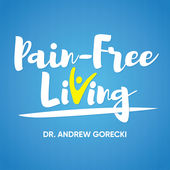
Debunking the Bone-on-Bone Myth: The Biotensegrity Perspective
Andrew Gorecki, DPT, Physical Therapist, Fellow of Applied Functional Science, Hip Pain Expert
The term "bone on bone" often sends shivers down the spine of anyone diagnosed with it. It paints a grim picture of bones grinding against each other, leading many to believe that surgery is their only option. But is this diagnosis as dire as it sounds? Let's delve deeper into the concept of biotensegrity to understand the true nature of our joints and debunk the "bone on bone" myth.
Understanding Biotensegrity
The term "biotensegrity" was introduced by Dr. Stephen Levin and further explored by researchers like Graham Scarr. It's a concept that combines "biological" with "tensegrity," a term coined by architect Buckminster Fuller. Tensegrity describes a structural principle where tensional and compressional components interact, resulting in a stable structure.
In the context of the human body, biotensegrity suggests that our bones, muscles, fascia, and other structures work together in a tension-compression balance. Our bones don't simply stack on top of one another; they float within a tension-based network of muscles and fascia.
The Myth of Constant "Bone on Bone"
If our bodies truly operated in a "bone on bone" manner, the forces exerted on our joints would cause them to wear down rapidly. As Scarr explains in his work, "Biotensegrity: The Structural Basis of Life," our bones are part of a complex, interconnected system. They're held in place and moved by a network of soft tissues, ensuring that they don't constantly grind against each other.
When this delicate balance is disrupted—due to weakened muscles, tight fascia, or misalignment—bones may come closer together. However, this doesn't mean they're perpetually grinding against each other. It's a sign that the body's biotensegrity system is out of balance.
Reimagining Joint Health
Rather than viewing "bone on bone" as an irreversible condition, it's essential to approach it from a biotensegrity perspective. By understanding that our bodies are more than just bones stacked together, we can explore holistic, non-surgical solutions to restore balance and alleviate pain.
Dive Deeper into the World of Hip Pain Relief
Intrigued by the biotensegrity perspective and eager to learn more about natural solutions to hip pain? Join us at our next workshop: How to Relieve Hip Pain Naturally. Dive deep into understanding hip pain, discover its root causes, and explore effective, non-surgical solutions based on the principles of biotensegrity.
🌟 Exclusive Invitation: Secure your spot for this transformative experience. Let's journey towards a pain-free life together.
🔗 Attend our FREE Hip Pain Relief Workshop on Nov. 18th at 10 AM
Register and get more info here: https://www.thesuperiortherapy.com/hippainrelief
Read more about biotensegrity here: https://en.wikipedia.org/wiki/Tensegrity
Reference:
Scarr, Graham. Biotensegrity: The Structural Basis of Life. 2014. This groundbreaking work delves deep into the structural principles of the human body, offering insights into how our bones and soft tissues interact in a dynamic balance.



